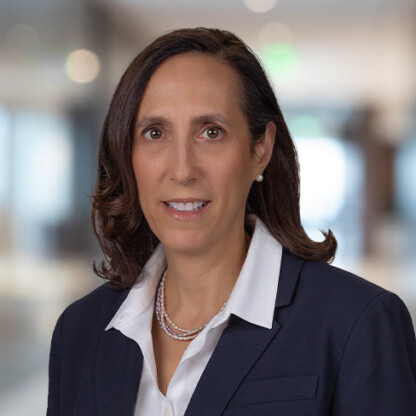
Payroll Protection Program Loans and Economic Injury Disaster Loans
The Coronavirus Aid, Relief, and Economic Security Act (“CARES Act”), signed into law on Friday March 27, 2020, introduced the Paycheck Protection Program (the “PPP”) with an initial $349 billion in funding and the goal of preventing job loss and small businesses failure due to losses caused by the COVID-19 pandemic. After exhausting the funding within 2 weeks, on April 24, 2020, the Paycheck Protection Program and Health Care Enhancement Act added $310 billion of funding for loans to be made under the PPP, $60 billion of which is set aside for PPP loans from small banks, community financial institutions, and credit unions. The PPP loan program is available for eligible small businesses, including sole proprietors, and non-profits, veterans organizations and tribal business concerns, to provide a forgivable loan to cover payroll and other costs. The legislation also expanded the separate Economic Injury Disaster Loan Program (the “EIDL” Program) with $10 billion of additional funding under the CARES Act, and an additional $10 billion in funding added on April 24, 2020, bringing the EIDL Programs grants total to $20 billion.
The PPP provisions of the CARES Act were further interpreted by the U.S. Small Business Administration (“SBA”) in eight interim final rules issued on April 2, 2020 (the “Interim Rule”), April 3, 2020 (the “Affiliation Rule”), April 14, 2020 (available here), April 24, 2020, April 27, 2020 (available here), April 28, 2020 (available here), April 30, 2020 (available here), and May 5, 2020 (available here), May 13, 2020 (available here), May 14, 2020 (available here), May 18, 2020 (available here) and Frequently Asked Questions issued on April 6, 2020 and updated through May 19, 2020 (the “FAQs”). In conjunction with the issuance of the Affiliation Rule, the SBA also issued a two-page explanation of the affiliation principles applicable to the PPP (the “Affiliation Guidance”). The Affiliation Rule and Affiliation Guidance clarified the affiliation principles that apply to applicants.
On April 24, 2020, the SBA issued guidance on how to calculate maximum loan amounts for each type of applicant (available here). [UPDATE – MAY 20, 2020] On May 15, 2020, the SBA issued its Loan Forgiveness Application, which provided several important clarifications. See our post here for more information regarding the key information in the Loan Forgiveness Application. The FAQs and the information in the Loan Forgiveness Application provide some additional clarification regarding the application of the affiliation rules and interpretation of the CARES Act, including guidance on how to calculate “payroll costs” and how a relationship with a third-party payroll provider and/or Professional Employer Organization (“PEO”) should be viewed for purposes of the PPP.
The FAQs make it clear that borrowers and lenders may rely on the SBA’s guidance in the FAQs and the Interim Rule available at the time of application. Specifically, Question 17 of the FAQs provides that borrowers may rely on the “laws, rules and guidance available at the time of the application.” Although, the same response does note that “However, borrowers whose previously submitted loan applications have not yet been processed may revise their applications based on clarifications reflected in these FAQs.”
Businesses need to understand both programs as well as the additional financial and other relief (including an Emergency Relief loan program for eligible small and mid-size employers) that may be available under the CARES Act in order to make short- and long-term planning decisions. These programs provide assistance to many businesses that may not meet the customary small business thresholds. Given the various qualification criteria, the programs and incentives enacted under the CARES Act must be evaluated separately for each business, considering industry, legal requirements and financial and other contractual commitments.
Paycheck Protection Program (“PPP”)
Overview
PPP loans are 100% federally guaranteed loans for small businesses intended for companies to maintain their payroll levels and allow partial loan forgiveness, as described below. Unlike most typical SBA loans, the PPP Loans are unsecured loans requiring no collateral, no personal guarantee, and no showing that credit is unavailable elsewhere.
The Interim Rule clarifies that the PPP loans, to the extent not forgiven, will have:
- A 2-year term (decreased from the maximum maturity of 10 years under the Act),
- An interest rate of 1% (increased from prior Treasury guidance that set the interest rate at 0.5%),
- Principal and interest deferred for 6 months.
Small businesses and sole proprietorships can begin applying April 3, 2020, and independent contractors and self-employed individuals can begin applying April 10, 2020. The Interim Rule also makes it clear that the loans will be made on a first-come, first-served basis. Given the currently available funds for the program, Treasury and SBA are anticipating an over-subscription, so it is critical to gather required information and, if eligible, submit an application as soon as possible.
The form of SBA borrower application is available (here) but each participating lender may provide its own form. Lenders may also require borrowers to complete additional paperwork. The FAQs make it clear that lenders may use their own online systems and a form they establish that asks for the same information (using the same language) as the SBA borrower application. Loans are offered through any existing SBA 7(a) lender or through any eligible and participating federally insured depository institution, federally insured credit union, Farm Credit System institution and certain other approved depository or non-depository financing providers. The borrower must certify that it is eligible for a PPP loan under the CARES Act and guidance in place as of the application date.
Eligible Borrowers and Affiliation Principles Applicable to PPP
In general and subject to certain SBA exclusions, to be eligible for a PPP loan, a business must, after applying the affiliation rules, if applicable:
(i) be a small business concern under the SBA’s employee-based or revenue-based size standards, or
(ii) meet both tests of the SBA’s “alternative size standard” as of March 27, 2020, which are: (1) maximum tangible net worth of the business is not more than $15 million; and (2) the average net income after Federal income taxes (excluding any carry-over losses) of the business for the two full fiscal years before the date of the application is not more than $5 million, or
(iii) be a business concern, nonprofit organization, veterans’ organization, or Tribal business concern that (a) employs no more than 500 employees whose principal place of residence is in the United States, or (b) does not exceed the number of employees in the size standard applicable to the borrower’s industry (which for some industries is up to 1500 employees). While this standard appeared to permit businesses to count only their US-resident employees, including domestic and foreign affiliates, for PPP eligibility purposes, [UPDATE – MAY 20, 2020] on May 18, 2020, the SBA issued an Interim Final Rule clarifying that applicants must count all employees of the applicant and its domestic and foreign affiliates for eligibility purposes. However, borrowers may ONLY those PPP loan proceeds to fund the Payroll Costs of its employees who reside in the United States.
The SBA first attempted to make this clarification on May 5, 2020, through its addition of Question 44 to the FAQs, which stated, consistent with the Act and the existing SBA regulations, that “For purposes of the PPP’s 500 or fewer employee size standard, an applicant must count all of its employees and the employees of its U.S. and foreign affiliates, absent a waiver of or an exception to the affiliation rules.” FAQ 44 also explained that “Business concerns seeking to qualify as a ‘small business concern’ under section 3 of the Small Business Act (15 U.S.C. 632) on the basis of the employee-based size standard must do the same.” FAQ 44 did not, however, directly address the potentially inconsistent language in the Interim Rule and FAQ 3 that seemed to imply, and had been widely interpreted to mean, that a borrower needed to count only those employees of the applicant and its affiliates “whose principal place of residence is in the United States.” [UPDATE – MAY 20, 2020] Given this widespread confusion, the May 18 Interim Final Rule also stated, “However, as an exercise of enforcement discretion due to reasonable borrower confusion based on SBA guidance (which was later resolved through a clarifying FAQ on May 5, 2020), SBA will not find any borrower that applied for a PPP loan prior to May 5, 2020 to be ineligible based on the borrower’s exclusion of non-U.S employees from the borrower’s calculation of its employee headcount if the borrower (together with its affiliates) had no more than 500 employees whose principal place of residence is in the United States. Such borrowers shall not be deemed to have made an inaccurate certification of eligibility solely on that basis. Under no circumstances may PPP funds be used to support non-U.S. workers or operations.” (emphasis added).
Question 34 of the FAQs clarified that agricultural producers, farmers and ranchers can qualify for a PPP loan if the business, combined with its affiliates, has 500 or fewer employees, falls within the $1 million revenue size-standard, or qualifies under the “alternative size standard” referenced above. Question 35 of the FAQs provides that agricultural and other forms of cooperatives are eligible to receive PPP loans as long as they meet other eligibility requirements.
The response to Question 14 of the FAQs provides additional clarification regarding how businesses should calculate their employee headcount for purposes of eligibility under the employee-based size standards applicable to the PPP. The FAQ response clarifies that borrowers should use a twelve-month period to calculate the number of employees, either by using their average employment over the same twelve-month period used to calculate their average monthly payroll costs, or by using what the FAQs describe as “SBA’s usual calculation” found in its regulations. The SBA’s usual calculation of employee count is based on the average number of employees per pay period in the twelve completed calendar months prior to the date of the loan application (or the average number of employees for each of the pay periods that the business has been operational, if it has not been operational for twelve months).
Notably, the CARES Act waives the SBA’s affiliation rules for determining PPP program eligibility for certain specific categories of businesses, including businesses in the Accommodation and Food Services Industry with 500 or fewer employees, businesses operating as a franchise that are assigned a franchise identifier code in the SBA Franchise Directory (available here), and businesses that receive financial assistance from a licensed Small Business Investment Company. As stated in the Affiliation Rule and FAQs, the remainder of businesses are subject to the SBA’s affiliation rules applicable to its business loan programs, summarized here in the Affiliation Guidance. The affiliation rules used for this purpose are different than the affiliation rules used for purposes of establishing whether a company is subject to the paid sick leave and expanded FMLA requirements under the Families First Coronavirus Response Act (FFCRA), which uses the integrated employer test under the FMLA.
Eligible companies must have been in operation on February 15, 2020 and must have, as of that date, had employees for whom the entity paid salaries and payroll taxes, or paid independent contractors. Question 10 of the FAQs clarifies that (i) eligible borrowers that use PEOs or similar third-party payers to process payroll and report payroll taxes may rely on the payroll documentation provided by the payroll provider/PEO for purposes of a PPP loan, and (ii) employees of an eligible borrower will not be considered employees of the payroll provider or PEO for this purpose.
In the April 23, 2020 FAQ and April 24, 2020 Interim Final Rule, the SBA also established a “limited safe harbor” period and indicated that a borrower who repays a PPP loan in full by May 7, 2020 will be deemed by the SBA to have made the required certification in good faith. On May 5, 2020, the SBA issued FAQ 43 extending the limited safe harbor to May 14, 2020 and, in light of additional guidance regarding the necessity standard issued on May 13, 2020, the SBA further extended the limited safe harbor to May 18, 2020. In this new guidance, the SBA set forth different standards for borrowers whose PPP loans, combined with those of their affiliates, are under $2M and those over $2M. More information regarding the SBA’s May 13, 2020 guidance regarding the necessity certification and the effect of this “limited safe harbor” can be found here. More information regarding the need to document decisions surrounding the certification process can be found here.
Moreover, the applicant must acknowledge that the funds will be used to retain workers and maintain payroll or make mortgage payments, lease payments, and utility payments. The FAQs further clarify that providing an accurate calculation of payroll costs and applying the affiliation rules is the borrower’s responsibility. Lenders are only expected to perform a good faith review of the payroll cost calculations, the depth of which should be informed by the quality of the documents provided by the borrower. These and other certification requirements are significant, as false or misleading certifications could potentially give rise to civil False Claims Act liability or criminal penalties.
Amount of the Loan
The maximum amount of a PPP loan available to each borrower is equal to the lesser of: (a) $10 million, or (b) 2.5 x its average total monthly payroll costs (as defined below). The CARES Act and Interim Rule provide that average monthly payroll costs should be calculated over the 12-month period preceding the application, but the application form itself states that monthly payroll costs will be calculated using 2019 payroll costs for most applicants. As explained above, Question 14 of the FAQs reconciles these two requirements, providing that borrowers may base aggregate payroll costs and employee counts on either calendar year 2019 or the 12-month period preceding the application. More information regarding how to calculate the eligible loan amount is available here.
For purposes of the PPP, “payroll costs” include:
- For a borrower other than an independent contractor, the sum of payments of any compensation with respect to employees (excluding employees whose principal place of residence is outside of the U.S.), that is:
- Salary, wage, commission, or other similar compensation*
- Cash tips or equivalent*
- Payment for vacation, parental, family, medical, or sick leave (other than qualified sick leave wages or qualified family leave wages under the FFCRA)* – See Question 8 of the FAQ for further clarification/support.
- Allowance for dismissal or separation*
- Payment of group health care benefits and insurance premiums (generally, medical, dental, vision and health flexible spending account benefits)
- Payment of retirement benefits
- Payment of State or Local tax assessed on employee compensation. Question 16 of the FAQs clarifies that payroll costs are calculated on a gross basis; provided that payroll costs do not include the employer’s share of payroll costs (e.g., FICA).
* Important Note: Question 7 of the FAQs clarifies that the CARES Act exclusion of any employee compensation in excess of an annual salary of $100,000 applies only to cash compensation. Therefore, non-cash benefits, including employer contributions to defined benefit and defined contribution retirement plans, payment for the provision of group health care benefits and insurance premiums, and payment of state and local taxes assessed on employee compensation, are not counted in calculating the cap and, therefore, those non-cash benefits may be included as a payroll cost, even for employees who have cash compensation in excess of $100,000 on an annualized basis.
- For an independent contractor, the sum of payments of any compensation or income of a sole proprietor or independent contractor that is a wage, commission, income, net earnings from self-employment or similar compensation (not in excess of more than $100,000 in 1 year, prorated).
The Interim Rule and FAQs clarify that independent contractors of a borrower do not count for purposes of the borrower’s PPP loan amount or forgiveness calculations. This was not clear from the face of the CARES Act, and should be considered by borrowers pursuing a PPP loan. Since independent contractors can also apply for a PPP loan, this appears to be a change to eliminate potential double counting.
Use of Loan Proceeds
The loans may be used for the following expenses/costs from February 15, 2020 through June 30, 2020:
- Payroll costs (as defined above)
- Costs related to the continuation of group health care benefits during periods of paid sick, medical or family leave, and insurance premiums
- Employee compensation
- Mortgage interest obligations (but not principal)
- Rent and utilities
- Interest on debt incurred prior to the loan
- Refinancing of SBA EIDLs that are made between January 31, 2020 and April 3, 2020
Note, however, that (i) the Interim Rule clarifies that at least 75% of the loan amount must be used for payroll costs and (ii) only a subset of these uses may be forgiven, as explained in more detail below. This is different from prior Treasury guidance, which did not require that 75% of the loan be used for payroll costs if the borrower was not seeking forgiveness. Certifications, including those carrying the penalties described above, must be made about the uses of the loan proceeds.
Forgiveness
A borrower of a PPP loan is eligible for loan forgiveness up to the full amount of the loan and any accrued interest for costs incurred and payments made during the 8-week period after the lender makes the first disbursement of the PPP loan to the borrower, subject to proper documentation, on:
- payroll costs (as defined above),
- mortgage interest on mortgages that had been in place prior to February 15, 2020,
- rent with respect to leasing agreements that had been in place before February 15, 2020, and
- payment of service for the distribution of electricity, gas, water, transportation, telephone, or internet access for such services that began before February 15, 2020.
[UPDATE – MAY 20, 2020] See our update here for a detailed description of the alternative 8-week period that can be used for purposes of calculating payroll costs. In summary, the alternative period may only be used for payroll costs incurred or paid, and is the 8-week period commencing with the borrower’s first company payroll following the disbursement of the loan.
Note, however, that (i) at least 75% of the forgiven amount must be used for payroll costs and (ii) the amount of the PPP loan forgiveness may be reduced if the borrower reduces the number of employees or salaries and wages (for employees with annual salaries of $100,000 or less by more than 25%).
The reduction penalty will not apply to the extent the borrower restores their workforce count and salaries/wages by June 30, 2020 to the level in effect on February 15, 2020.
The FAQ issued on April 8, 2020 also clarified that the lender must make the first disbursement of the loan no later than 10 calendar days from the date of loan approval, so lenders and borrowers do not have much flexibility in choosing when the 8-week timeframe begins.
The SBA resumed accepting PPP applications from participating lenders on Monday, April 27, 2020 at 10:30 am EDT. The original tranche of PPP funding ran out in 14 days and many eligible businesses did not receive funding. The new $310 billion for PPP loans added on April 24, 2020, however, has been slower to exhaust, and as of May 16, there continues to be PPP funding yet to be awarded.
Economic Injury Disaster Loan (“EIDL”) Program
Another option for small businesses is the SBA’s existing EIDL Program, which was expanded by the CARES Act and provides for longer-term loans with favorable borrowing terms. Companies in all 50 states, District of Columbia, and some U.S. territories are eligible for EDILs relating to economic injury caused by the COVID-19 pandemic. While there are no loan forgiveness provisions applicable to EIDLs, companies that have already applied for or received EIDLs due to economic injury attributable to the COVID-19 pandemic can seek to refinance their EIDLs under the PPP to take advantage of the PPP’s loan forgiveness provisions. Additionally, while companies may be eligible for loans under both programs, they are unable to seek recovery under the EIDL for the same costs that are covered by a PPP loan.
The CARES Act expanded EIDL eligibility for the period between January 31, 2020 and December 31, 2020, to include any business with not more than 500 employees, any individual operating under a sole proprietorship or as an independent contractor, and any cooperative, ESOP or tribal small business concern with not more than 500 employees. The new April 24, 2020 relief package adds agricultural enterprises with not more than 500 employees to this list of eligible businesses. Subject to guidance from the SBA, these applicants would also appear to still be subject to the SBA’s affiliation rules governing financial assistance programs. Entities previously eligible to receive SBA EIDLs, including small business concerns, private nonprofit organizations and small agricultural cooperatives, remain eligible for such loans under the more favorable terms authorized by the CARES Act.
To qualify for an EIDL under the CARES Act, the applicant must have suffered “substantial economic injury” from COVID-19. EIDLs under the CARES Act are based on a company’s actual economic injury determined by the SBA (less any recoveries such as insurance proceeds) up to $2 million. EIDLs may be used for payroll and other costs as well as to cover increased costs due to supply chain interruption, to pay obligations that cannot be met due to revenue loss and for other uses. The interest rate on EIDLs is 3.75% fixed for small businesses and 2.75% for nonprofits. The EIDLs have up to a 30-year term and amortization (determined on a case-by-case basis).
The CARES Act also permits applicants to request an advance of up to $10,000 to pay allowable working capital needs; the Act stated the advance is expected to be paid by the SBA within 3 days of submission of an EIDL application to SBA, provided the application contains a self-certification under penalty of perjury of the applicant’s eligibility for an EIDL. However, the SBA’s website indicates that the funds will only be made available “within days following a successful application.” This advance is still essentially a grant and is not required to be repaid, even if an eligible borrower is ultimately denied an EIDL, but the amount of the advance must be deducted from any loan forgiveness amounts under a PPP loan, described above.
EIDLs under the CARES Act do not require personal guarantees for loans up to $200,000, but do require personal guarantees by owners of more the 20% of the borrower for loans in excess of that amount. The CARES Act waives the requirement for the borrower to demonstrate that it is unable to obtain credit elsewhere. However, unless changed by the SBA, it appears that the requirement for collateral on EIDLs over $25,000 would still apply, and, in processing a borrower’s application, the SBA must make a determination that the applicant has the ability to repay the loan. Further, the SBA can approve a loan based solely on the credit score of the applicant or other means of determining the applicant’s ability to repay the loan, without requiring the submission of tax returns, which should expedite approval of EIDLs during the covered period.
Given the very favorable terms of these two SBA loan programs and the potential for loan forgiveness under PPP loans, eligible small businesses who have been economically impacted by the COVID-19 pandemic should strongly consider taking advantage of these loan programs. Applications for EIDLs should be submitted directly to the SBA, while PPP loans will be available from SBA-approved lenders and the other lenders approved by the SBA to make PPP loans.
For more information about recommended steps, please contact your Foley relationship partner. For additional web-based resources available to assist you in monitoring the spread of the coronavirus on a global basis, you may wish to visit the CDC and the World Health Organization.
Foley will continue to keep you apprised of relevant developments. Click here for Foley’s Coronavirus Resource Center for insights and resources to support your business during this challenging time.



